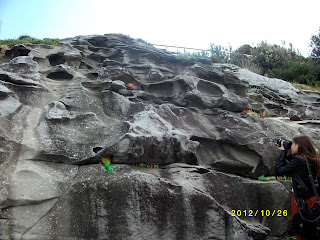Cockatoo Island
Although it was one of the earliest places in Sydney Harbour to be explored, Cockatoo Island was off limits to the public for two hundred years. Only since 2008 has the island been open as part of the Sydney Harbour Trust's newest park.
We left Circular Quay on the Woolwich ferry on a cold winter's day.
It's a nice ride on the ferry into the inner harbour.
The ferry ride takes about 15 minutes. There is no admission fee to the island.
The visitor's centre is the old guardhouse and security checkpoint dating from World War Two.
From 1832 to 1867 convicts who were not "amenable to discipline" were sent to the island there they built their own gaol, quarrying the rock for their cells and forging the iron bars for their windows.
There was little chance of any prisoner escaping. Like most Englishmen of their time they could not swim and the harbour is obviously full of sharks. There were only two escapees, the best known of who was Fred Ward, given seven years for horse stealing. His Aboriginal wife swum across with the tools he needed to cut off his leg-irons and he and Frederick Britten swam to shore. From there he took up bushranging in a serious way becoming famous as Captain Thunderbolt until he was shot dead by the Mounted Police at Kentucky Creek near Uralla in 1870.
Some of the older buildings have not survived, having their sandstone blocks robbed out for later buildings.
Once they had built their own prison, the convicts then built the prison dock, standing up to their waists in cold water in leg-irons.
Here is the "judas window" for one of the cells. The convicts also built the solitary confinement cells which are only now being uncovered. These were pits lined with sandstone blocks and with iron gratings for a roof. Convicts were lowered into them for their sentence.
The redcoats assigned to guard the convicts lived in a large single-roomed barracks. The walls were loopholed to allow them to fire on the prisoners in the event of an uprising.
After 1867 the prison was closed and from 1870 to 1880 Cockatoo Island became the Biloela Industrial School for Girls. Some of the young women were criminals but most were just from violent or neglectful homes and supposedly being offered refuge. Even so, conditions were grim and the girls often rioted. In 1887 the schools was transferred to Parramatta and from 1888 to 1908 Cockatoo Island was used as a medium security prison. A ship anchored nearby, the Vernon, became a reformatory for boys.
In contrast to the accommodation for the girls and later the boys, their overseers lived in a magnificent Arts and Crafts style guesthouse.
In 1908 the island was passed over to the Federal Government for a shipbuilding and repair facility for the Royal Navy Australian Squadron (the Royal Australian Navy did not exist until 1911). Various facilities were built. At one stage the Sutherland Graving Dock was the largest in the world.

In 1930 it became the Commonwealth Naval Dockyard and the first steel warship built in Australia was launched at the slipways here.
In the Second World War the island was the major shipbuilding and maintenance facility of the South West Pacific following the fall of Singapore. At the entrance an aerial photograph from this period shows eight ships in the docks including two cruisers, two destroyers, two corvettes, an island trader and a floating crane. There were sufficient resources to work on all eight.
Two tunnels - Tunnel 1 and the Dog-leg Tunnel (pictured) were built as air-raid shelters and to allow rapid movement across the island.
Other smaller shelters were also built.
From 1945 to 1965 the destroyers Vampire and Vendetta were built here and two T-class submarines fitted out. The Turbine Room could handle the largest naval steam turbines then built.
From 1965 to 1992 the O-class submarines were fitted out here and HMAS Success built. In 1992 the dockyard closed and in 2001 the Sydney Harbour Trust took over.
There are some magnificent Morton Bay Figs on the island that date from the earliest times.
Some modern plantings are found here and there, all of plants from the area, many of which are now rare.
The really hardy can hire a tent and camp overnight.
The island has restaurants and a bar and public toilets. The cheap canteen where we ate is on the left.
The cateen has outdoor seating.
Ferries are frequent but keep you eye on the time as there is no warning of the last ferry.































































